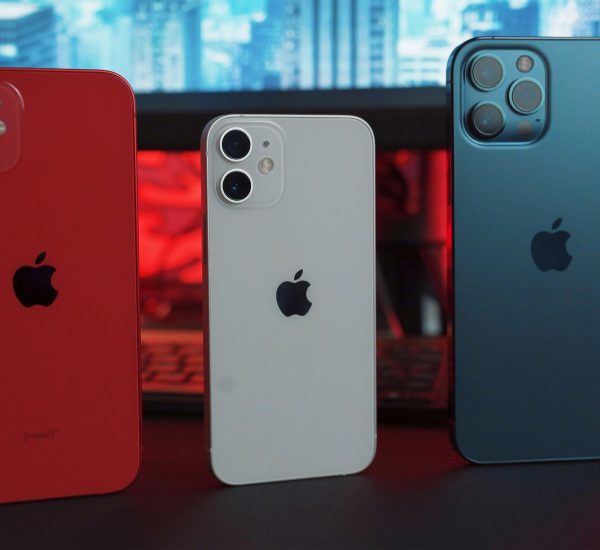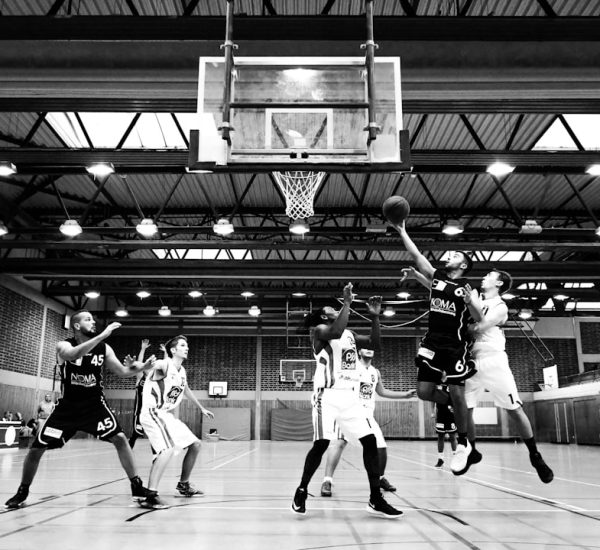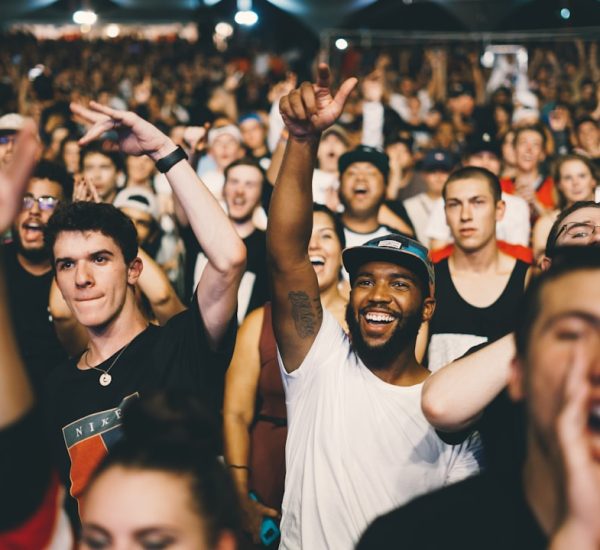Born on October 30, 1960, Diego Armando Maradona was an Argentine professional soccer player and manager. Nicknamed as “El Pibe de Oro” (The Golden Boy) for his gifted talent, the Argentine legend is widely considered as the greatest soccer player of all time.
Operating as an attacking midfielder and striker, Maradona has scored 259 goals in 491 senior club appearances. During his illustrious career, the Golden Boy played for Argentinos Juniors, Boca Juniors, Barcelona, Napoli, Sevilla, and Newell’s Old Boys.
The Argentine striker is fondly remembered for his time with Napoli and the Argentine National Soccer Team, winning most of his accolades and trophies. Similarly, Maradona has earned a lot of praise and respect for his contribution to the sport and services to society during his life.
The Golden Boy (El Pibe de Oro)
Diego Maradona was born in a low-income family from Buenos Aires, Argentina. His father, Diego Maradona “Chitoro,” and his mother, Dalma Salvadora Franco, and seven other siblings. His love affair for the sport began at a very young age when his parents gifted him a soccer ball on his third birthday.
At the age of only eight, while playing for his neighborhood club Estrella Roja, he was spotted by a talent scout who took him to Argentinos Juniors. During matches, the young Maradona amused spectators by displaying his unique talents and dribbling skills, and many people were so amazed and skeptical of his age.
Although he had a child’s physique, he was an intelligent boy and was miles ahead of the other kids of his age.
The Golden Boy made his professional debut for Argentinos Juniors on October 20, 1976. It was ten days before his 16th birthday, making him the youngest player to be ever fielded in the history of the Argentine Primera Division. The striker went on to play for five years at Argentinos Juniors, scoring 115 goals in 167 matches, before moving to Boca Juniors.
CA Boca Juniors and FC Barcelona
Before joining Boca Juniors in 1981, the attacking midfielder was already a sensation in Argentina. All the big clubs offered to make him the best-paid soccer player in the country. However, he chose Boca Juniors and helped the team win the league title in his first and only season.
In 1982, Maradona signed for FC Barcelona for a world record fee of around 8 million dollars. Unfortunately, the Argentine legend’s time with Barcelona was marred by adverse circumstances. Although he won the Copa Del Rey and Spanish Super Cup in 1983, Diego missed several games due to recurrent injuries and illness.
In addition, Maradona was involved in several incidents, notably the brutal fight which erupted at the end of the Copa Del Rey Final in 1984. After losing the game and being provoked by Athletic Bilbao’s players and fans, Maradona got into a violent altercation with several Bilbao players.
A mass brawl broke out between players and staff from both teams. Fans also joined in by throwing objects on the pitch, resulting in 60 injured people. Maradona was known for his bad temperament and often got into disputes with the executives at Barcelona.
However, his behavior and actions leading to the fight with the Bilbao players were the final straw to his time in Spain. He was immediately sold to Napoli for another world-record fee. Despite his injury records in the two years at Barcelona, the Argentine scored 38 goals in 58 games.
S.S.C. Napoli
Following his arrival in Italy in July 1984, Diego Maradona was officially unveiled to the world media in front of 75,000 Napoli fans at the Stadio San Paolo. He wore the famous number 10 jersey and was soon given the captain’s armband. He was an instant hit as he peaked his career and became the fans’ favorite for his goals, leadership, and overall contribution to the club.
Before signing the Argentine striker, Napoli was an average team in a country where the major trophies were fought between big clubs like AC Milan, Juventus, Roma, and Inter Milan. However, Maradona’s arrival was the catalyst that eventually ended that domination. He helped the club win its first-ever league title in 1987. Napoli also lifted the Coppa Italia that year.
The Maradona, Bruno Giodano, and Careca Trio
Together with Bruno Giordano and Careca, the trio forged a terrific attacking partnership called the ‘Ma-Gi-Ca.’ Eventually, Napoli became a dominating force and won the UEFA Cup in 1989. A second league title followed, together with a triumph in the Italian Supercup in 1990.
Maradona held the record for the best goal scorer of Napoli with 115 goals until Marek Hamsik surpassed that tally in 2017.
Despite his indisputable talent, the Argentine striker was notably famous for his controversial lifestyle. Maradona was known to be consuming drugs throughout his career. Moreover, his reputation was further tarnished due to his alleged friendship with the Italian mafia and his illegitimate children’s scandal.
Eventually, Maradona endured a disgraceful end to his career with Napoli when he was arrested for cocaine possession and subsequently failed a drug test n 1991. As a result, the Golden Boy served 15 months suspension from playing soccer and ultimately left the Italian club in 1992.
A Famous World Cup Win
Maradona made his international debut on February 27, 1977, at the age of 16. Unfortunately, he missed out on the Argentine squad for the 1978 World Cup due to his young age. However, the attacking midfielder did participate in the 1979 World Youth Championship, where he won the Golden Boot and helped his country win the tournament.
The striker played his first World Cup in 1982. Despite entering the competition as defending champions and favorites for the title, the Argentine National Team performed below expectations. They were knocked out in the second round after losses against Brazil and Italy.
In 1986, the Argentine national team, captained by Maradona, dominated and won the World Cup in style. The striker scored five goals, made five assists. He also claimed the Golden Ball after being voted player of the tournament.
The Hand of God
The Argentine legend is notably remembered for his brace against England in the knockout round. The first goal, which looked like a header, was scored by striking the ball with his hand. This famous goal, coined as ‘Hand of God’, became the fiasco and most contentious moment of World Cup history.
The second goal, however, is a thing of beauty. After receiving the ball in his half, Maradona dribbled past 5 English players to beat the goalkeeper. FIFA later voted this goal as the greatest goal ever in World Cup history. Subsequently, Maradona lifted the World Cup after Argentina defeated West Germany 3-1 in the final.
Four years later, Argentina reached the World Cup final again. However, in a remake of the previous final, the Argentine team, captained by Maradona, was defeated by West Germany by 1-0. The Argentine midfielder played another pivotal role; however, he could not guide his country towards a back-to-back World Cup victory.
The FIFA World Cup 1994
In the 1994 World Cup held in the USA, the world was shocked to learn that Maradona was expelled from the competition after testing positive for ephedrine. He played only two games and scored one goal against Greece. This incident led to another high-profile suspension after his 15 months ban for cocaine consumption in 1991.
Eventually, this incident resulted at the end of his international career. The Argentine represented his country for over 17 years, playing 91 games and scoring 34 goals. He later wrote in his autobiography that the failed doping test was not his fault. As instructed by his trainer, he usually had a power drink; however, the US version of the beverage contained banned chemicals compared to the version from Argentina.
The Retirement of Maradona
After his suspension for the drug case in 1991, Maradona left Napoli for Sevilla. He played for one year for the Spanish side before moving back to his country. The striker joined Newell’s Old Boys in 1993 before returning to Boca Juniors in 1995. He played for another two years before hanging up his boots.
After his professional retirement, the Argentine legend appeared in several testimonial and charity games. Similarly, in November 2001, Maradona participated in his testimonial match. The Argentina National Team and an All-Star World XI played against one another.
Management and Coaching
Following a couple of short and unsuccessful stints as coach at Textil Mandiyú and Racing Club in 1994 and 1995, respectively, Maradona returned to the scene in 2008. He was appointed to fill in the vacant managerial post of the Argentina National Soccer Team.
Despite three wins in his first three games, Maradona tasted a humiliating defeat by 6-1 against Bolivia in the World Cup qualifying rounds. Luckily, Argentina managed to win their two remaining games to qualify for the 2010 World Cup.
Maradona burst out during a live press conference and resorted to abusive language to silence his critics in the aftermath of his heroics. Consequently, he was imposed with a hefty fine by FIFA and banned for two months from any soccer activity.
During the 2010 World Cup, Argentina topped their group by winning all their three games comfortably. They also defeated Mexico by 3-1 to reach the quarter-finals of the competition. After that, however, Maradona endured a heavy defeat by 4-0 against Germany to end Argentina’s World Cup dream.
Sacking As Argentina Head Coach
In the weeks that ensued, the Argentine legend’s future with the National Team was in the limelight. However, despite initial news that the Argentine Football Association had agreed to renew his contract, Maradona was surprisingly sacked on July 27, 2010.
Afterward, he worked with several foreign clubs, namely Al Wasl FC and Fujairah in the United Arab Emirates. He also had a stint with Dorados in Mexico before leaving the club due to health issues.
In September 2019, Maradona returned to club management in his home country. He was appointed as head coach of Gimnasia de La Plata for the rest of the 2019/20 season. Despite an unconvincing performance, his contract was extended till the end of the 2020/21 campaign.
Maradona’s Personal Life
Maradona got married to Claudia Villafane in November 1989. The couple had two daughters, namely Dalma Nerea and Gianinna Dinorah. Nevertheless, the Argentine personal life was as dramatic and famous as his professional career.
During his wedding, he had many girlfriends and was rumored to be the father of several illegitimate children.
In 1993, Italian Courts even ruled that Diego Sinagra was the son of Maradona. However, the Argentine legend never underwent any paternity tests to dismiss such a claim. On the contrary, he was quoted as saying: “My legitimate kids are Dalma and Giannina.
The rest are the products of my money and mistakes.” However, after his divorce from Claudia Villafane in 2004, he finally admitted to the father of Diego Singra (Diego Armando Maradona Junior) and Jana Maradona, after lengthy legal battles with the mothers of both children.
Drug Addiction and Health Issues
Maradona’s drug abuse can be traced back to the 1980s. He reportedly began taking cocaine during his time in Barcelona. After his move to Napoli in Italy, the Argentine striker became an addict. He declared in 1996: “I was, I am, and I will always be a drug addict. A person who gets involved in drugs has to fight it every day.”
Maradona also suffered from recurrent health issues. In 2000, he was hospitalized due to a heart problem. By the end of his professional career, the Argentine legend was suffering from obesity. He had to undergo gastric bypass surgery and subsequently follow a liquid diet to lose the excess weight. In 2007, he was hospitalized again and treated for hepatitis due to alcohol abuse.
He was later admitted to a psychiatric clinic for a rehabilitation program. Afterward, Maradona stated that he had stopped drinking and had not consumed drugs for over two years. However, there were rumors that he was still on drugs due to his frequent erratic behaviors in public.
Later, in 2019, Maradona was readmitted to the hospital. This time he was suffering from internal bleeding due to a hernia. But, again, he was discharged after successful surgery.
Tax Dispute With Italian Authorities
In 2009, Maradona was convicted of tax evasion by Italian officials. He allegedly did not pay taxes on his sponsorship earnings and merchandising deals during his time in Italy. As a result, the Napoli star was ordered to pay 37 Million Euros in taxes, with over 23 Million Euros relating to interest on late payment of the original tax.
It is reported that Maradona had settled only 42,000 Euros to the Italian authorities. In addition, during two separate visits to Italy, he had two luxury watches and a set of earrings seized by the Italian police. These were later auctioned to pay off some of his debts.
The Argentine legend has always proclaimed his innocence and insisted he owes no one. In 2013, he appealed the ruling of the Italian Authorities, citing that the senior figures at Napoli should be held responsible. He admitted to earning a lot of money; however, he was unaware of the contractual obligations. Unfortunately, his appeal for the cancellation of the tax assessment was categorically rejected.
Diego Maradona Death and Tribute
Diego Maradona died on November 25, 2020, at only 60 years old. The Argentine, recovering from recent brain surgery, suffered a heart attack during his sleep. The news of his sudden loss was a big shock to everyone. In the days that followed, football clubs, players, and fans worldwide paid tribute to hail, one of the greatest football players in the sport’s history.
All the Napoli players wore the famous number 10 shirt during a game as a tribute to Maradona. Likewise, many clubs mourned the loss of the Argentine legend by having a minute of silence before their match.
Similarly, below is a list of tributes paid to Maradona:
- After Maradona’s death, Napoli’s home stadium was renamed ‘Stadio Diego Armando Maradona.
- In 2000, Napoli retired the number 10 jersey. It was the famous number worn by Maradona during his career.
- In 2004, Argentinos Juniors renamed their stadium to ‘Estadio Diego Armando Maradona’ as a tribute to Maradona, who started his professional career there.
- Maradona’s fans in Buenos Aires founded a ‘Church of Maradona’ in 1998. Every year, they celebrate the church’s anniversary on the Argentine legend’s birthday.
- In June 2021, a statue of Diego Maradona was unveiled outside the Madre de Ciudades Stadium by the Argentina National Football Team.
- In November 2018, a statue of Maradona scoring the ‘Goal of the Century’ was built and placed outside the Azteca Stadium.
- In 2006, Maradona was appointed as a Goodwill Ambassador of The IIMSAM (Intergovernmental Institution for the Use of Micro-algae Spirulina Against Malnutrition).
- In 1990, the Argentine legend was given one of the most prestigious cultural awards in Argentina. He was presented with the Diamond Konex Award by The Argentine-based Konex Foundation for his contribution to sports.



